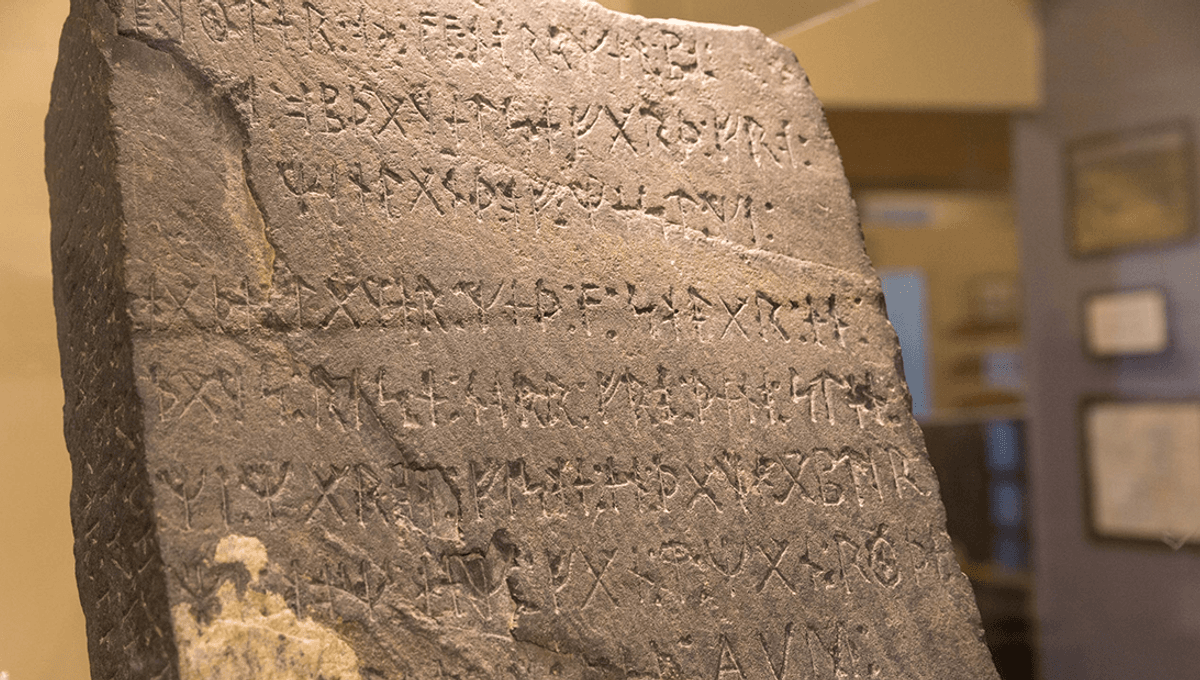
In I898, Olof Öhman, a Swedish immigrant living in Minnesota, claimed to have found a huge 90-kilogram (200-pound) slab of stone, hidden in the roots of a tree. The slab was covered in characters of the runic alphabet used by peoples of northern Europe, Britain, Scandinavia, and Iceland before the 17th century. A translation of the runes tells the story of a group of Scandinavian explorers in the area being attacked in 1362.
“Eight Geats and twenty-two Norwegians on an exploration journey from Vinland to the west,” a translation of the inscription reads. “We had camp by two skerries one day’s journey north from this stone. We were [out] to fish one day. After we came home [we] found ten men red of blood and dead. AVM (Ave Virgo Maria) save [us] from evil. [We] have ten men by the sea to look after our ships, fourteen days’ travel from this island. [In the] year 1362.”
Over the years, people have believed this – and other similar “finds” in Oklahoma – to be evidence that Vikings made the journey all the way to Minnesota. But though there is evidence that Vikings made it to the coast of North America long before Columbus, there is no evidence that they made their way inland.
The runestone, like the others, is a hoax – or at least a forgery for other purposes later believed by someone else to be the real deal. The language on the stones does not fit with the language used in 1362, and fits much better with a 19th-century understanding of the language rather than the 14th century. The rune included characters that had died out centuries before 1392, as well as characters still in limited use in the 18th and 19th centuries. Either this is a hoax (which it is) or we have ourselves a case of the only thing cooler than Vikings: time-traveling Vikings.
Researchers believe that Öhman learned how to create the runes from a book called The Well-Informed Schoolmaster by Carl Rosander. A copy was found in Öhman’s possession, signed and dated March 2, 1891, eight years before the rune was “found”, as well as another book on runes. As well as a 19th-century understanding of runes, the hoax shows a 19th-century understanding of history and Native Americans.
“The broadest and most obvious reason for the durability of the Viking legend is that it took root in a Scandinavian community that was proud of its heritage,” anthropologist Michael Michlovic wrote of the hoax in a paper. “One of its earliest constructions portrays Scandinavian explorers struggling through the wilderness. One party is ambushed, killed and scalped by Indians; another party discovers the remains and records the attack on the stone with a prayer for help. The language used may be taken to reflect popular attitudes about Indians and Norsemen. Indians are described as savages, wild heathens, pillagers, hostile, vengeful, wild nomads, wild beasts, suspicious, and snakelike. The Norse are referred to as undaunted, brave, daring, intrepid, and faithful.”
Source Link: How The Supposedly Ancient Kensington Runestone Became Inscribed With 19th-Century Runes